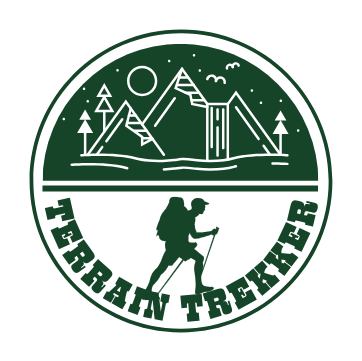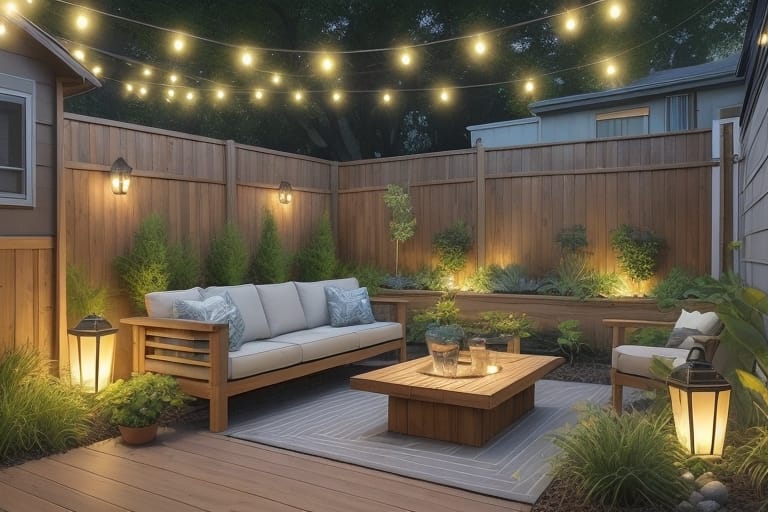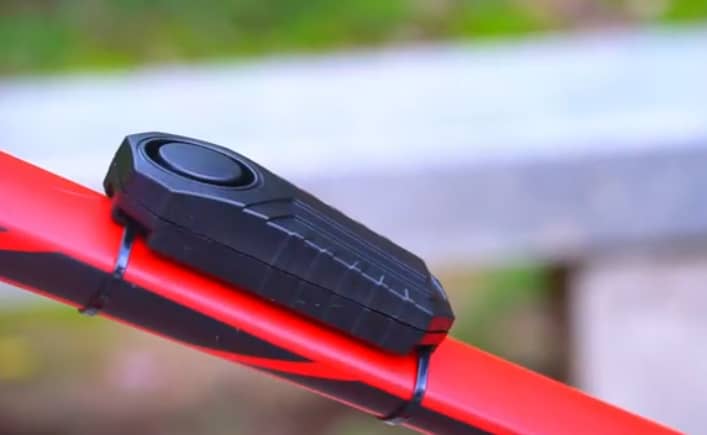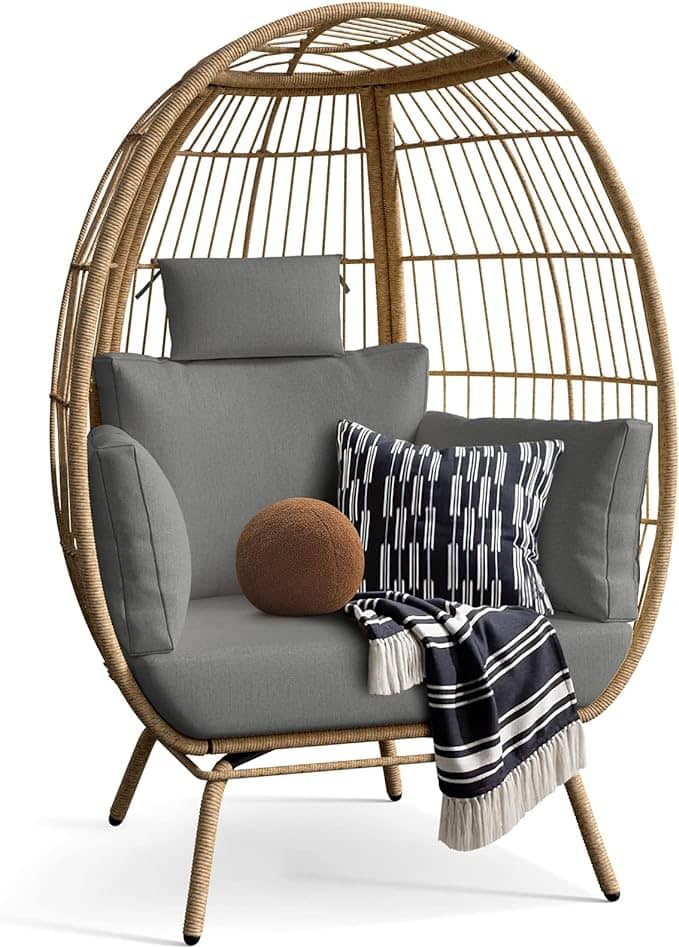As a homeowner, you may be considering alternatives to a traditional grass lawn for your backyard. There are many reasons why a no-grass option may be a better choice for you and your family. In this article, I will explore the benefits of a no-grass backyard, including the environmental impact, maintenance and upkeep, and aesthetic and functional benefits.

One of the most significant benefits of a no-grass backyard is the positive environmental impact. Grass lawns require a lot of water, pesticides, and fertilizers to maintain their lush appearance. By choosing a no-grass option, you can significantly reduce your water usage and decrease your environmental impact. Additionally, a no-grass backyard can provide habitats for local wildlife, such as birds and butterflies, and improve the overall biodiversity of your yard.
Another advantage of a no-grass backyard is the reduced maintenance and upkeep required. Grass lawns require frequent mowing, watering, and fertilizing, which can be time-consuming and expensive. With a no-grass option, you can spend less time and money on maintenance and more time enjoying your outdoor space. Additionally, a no-grass backyard can be designed to suit your specific needs and preferences, whether you want a vegetable garden, a patio for entertaining, or a play area for children.
Key Takeaways
- A no-grass backyard can have a positive environmental impact by reducing water usage and improving biodiversity.
- Choosing a no-grass option can significantly reduce the time and money spent on maintenance and upkeep.
- A no-grass backyard can be designed to suit your specific needs and preferences, providing a functional and beautiful outdoor space.
Environmental Impact
As someone who cares about the environment, I am always looking for ways to reduce my carbon footprint. One way that I have found to be particularly effective is by getting rid of my grass lawn and replacing it with a no-grass option. Here are a few reasons why:
Reduction in Water Usage
According to the National Wildlife Federation, “the average American household uses 320 gallons of water per day, about 30 percent of which is devoted to outdoor uses.” A significant portion of that water is used to maintain grass lawns. By eliminating the grass and replacing it with a no-grass option, such as native or naturalized landscaping, you can significantly reduce your water usage. This not only saves you money on your water bill, but it also helps to conserve a precious resource.
Decreased Chemical Runoff
When you have a grass lawn, you often need to use chemicals to keep it looking healthy and green. These chemicals can include fertilizers, pesticides, and herbicides. Unfortunately, when it rains, these chemicals can be washed off your lawn and into nearby waterways, where they can harm aquatic life. By getting rid of your grass lawn and replacing it with a no-grass option, you can significantly reduce the amount of chemicals that are washed into nearby waterways.
Promotion of Biodiversity
Grass lawns are often monocultures, meaning that they consist of only one type of plant. This can make them less hospitable to wildlife, which relies on a diverse range of plants for food and habitat. By getting rid of your grass lawn and replacing it with a no-grass option, such as a wildflower meadow or a vegetable garden, you can promote biodiversity in your backyard. This can attract a range of wildlife, including birds, bees, and butterflies, which can help to pollinate your plants and keep your backyard ecosystem healthy.
In conclusion, getting rid of your grass lawn and replacing it with a no-grass option can have a significant positive impact on the environment. By reducing your water usage, decreasing chemical runoff, and promoting biodiversity, you can make a real difference in your backyard and beyond.
Maintenance and Upkeep
Lower Maintenance Requirements
One of the biggest benefits of having a no-grass backyard is the lower maintenance requirements. With no grass to mow, fertilize or water, you can save both time and money. Instead of spending hours every week maintaining your lawn, you can spend that time enjoying your outdoor space.
No Mowing Needed
One of the biggest time-savers of having a no-grass backyard is the elimination of mowing. Mowing can be a time-consuming and labor-intensive task, especially if you have a large lawn. With a no-grass backyard, you can eliminate this task and use that time for other activities.
Ease of Seasonal Transitions
Another benefit of having a no-grass backyard is the ease of seasonal transitions. With a grass lawn, you may need to aerate, fertilize, and reseed yearly to maintain a healthy lawn. With a no-grass backyard, you can easily transition from one season to the next without the need for these extra steps. For example, in the fall, you can simply remove any fallen leaves and prepare your outdoor space for winter activities.
Overall, the lower maintenance requirements, elimination of mowing, and ease of seasonal transitions make a no-grass backyard a great option for homeowners looking to reduce their outdoor maintenance workload.
Aesthetic and Functional Benefits

As someone who has opted for a no-grass backyard, I can attest to the numerous benefits that come with this design choice. Not only does it provide a unique look and feel to your outdoor space, but it also offers several functional benefits that make it a practical option for any homeowner. Here are a few key aesthetic and functional benefits of a no-grass backyard:
Design Versatility
One of the most significant advantages of a no-grass backyard is the design versatility it offers. Without the constraints of a traditional lawn, you have the freedom to create a unique and personalized outdoor space that suits your style and needs. From a modern, minimalist look with clean lines and hardscaping to a lush, tropical oasis with plants and water features, the possibilities are endless. Plus, you can mix and match different materials like gravel, pavers, and wood to create a custom look that’s all your own.
Year-Round Beauty
Another benefit of a no-grass backyard is the year-round beauty it provides. Unlike a traditional lawn that can turn brown and dull during the winter months, a no-grass backyard can maintain its beauty throughout the year with the right design elements. For example, you can incorporate evergreen plants, colorful flowers, and interesting textures to create a visually appealing space that looks great even in the colder months.
Increased Usable Space
Finally, a no-grass backyard can provide increased usable space for a variety of activities. Without the need for mowing and maintenance, you can use your outdoor space for entertaining, gardening, or simply relaxing without worrying about damaging the grass. Plus, you can add functional elements like seating areas, fire pits, and outdoor kitchens to make the most of your backyard space.
Overall, a no-grass backyard offers a range of aesthetic and functional benefits that make it a great option for any homeowner looking to create a unique and practical outdoor space.
Financial Considerations

Cost Savings Over Time
One of the most significant benefits of a no-grass backyard is the cost savings over time. Traditional lawns require regular maintenance, which can add up to a significant expense over the years. This includes the cost of watering, fertilizing, mowing, and other maintenance tasks. With a no-grass backyard, these costs are significantly reduced or eliminated.
For example, if you live in an area where water is scarce or expensive, a no-grass backyard can help you save money on your water bills. According to Acorn Finance, artificial grass can accomplish the same thing for little to no maintenance. Additionally, you won’t have to spend money on fertilizers, pesticides, or other chemicals to keep your lawn looking healthy.
Potential Property Value Increase
Another financial consideration to keep in mind is the potential increase in property value that a no-grass backyard can provide. Many homebuyers are looking for low-maintenance outdoor spaces, and a no-grass backyard can be a significant selling point. According to Rocket Homes, a no-mow lawn alternative is an eco-friendly and low-maintenance alternative to the classic turf lawn. It’s a great option for people who want to enjoy a beautiful yard without the work and resources that go into it.
Moreover, a no-grass backyard can also increase the usable space of your property. You can use the area for a variety of purposes, such as gardening, outdoor dining, or even as a play area for your children. This additional usable space can make your property more attractive to potential buyers, which can lead to an increase in property value.
In conclusion, a no-grass backyard can provide significant financial benefits over time, including cost savings and potential property value increases.
Health and Wellness
As someone who prioritizes health and wellness, I am always looking for ways to improve my overall well-being. One surprising way to do this is by opting for a no-grass backyard. Here are a few ways that this choice can benefit your health and wellness:
Reduced Allergens
Grass is notorious for being a source of allergens, which can cause symptoms such as sneezing, itching, and watering eyes. By eliminating grass from your backyard, you can reduce your exposure to these allergens and enjoy a more comfortable outdoor space.
Stress Reduction and Mental Wellbeing
Spending time in nature has been shown to reduce stress and improve mental well-being. By creating a backyard that is focused on natural elements such as rocks, trees, and flowers, you can create a calming and relaxing environment that promotes overall wellness. Additionally, opting for low-maintenance landscaping options can reduce the amount of time and effort required to maintain your backyard, allowing you to spend more time enjoying the space and reaping the mental health benefits.
Overall, opting for a no-grass backyard can be a great way to prioritize your health and wellness. By reducing allergens and creating a calming environment, you can enjoy a more comfortable and relaxing outdoor space.
Frequently Asked Questions

What are the advantages of choosing alternative landscaping over traditional grass lawns?
Choosing alternative landscaping over traditional grass lawns has many advantages. One of the biggest advantages is that it requires less maintenance. This means that you will spend less time and money on mowing, watering, and fertilizing your lawn. Additionally, alternative landscaping options such as rocks, gravel, and mulch can add a unique and modern touch to your backyard.
How can a no-grass backyard contribute to environmental sustainability?
A no-grass backyard can contribute to environmental sustainability in several ways. First, it reduces water usage, which is especially important in areas with droughts or water shortages. Second, it eliminates the need for harmful chemicals such as pesticides and fertilizers, which can contaminate groundwater and harm wildlife. Third, it provides a habitat for native plants and animals, which can help support biodiversity.
What are some cost-effective ways to design a backyard without grass?
Designing a backyard without grass can be cost-effective if you choose the right materials. Some cost-effective options include using mulch or gravel as a ground cover, planting native plants that require little water, and incorporating hardscaping features such as a patio or deck. Additionally, choosing low-maintenance plants and materials can help save money in the long run.
How can pet owners benefit from a backyard with no grass?
Pet owners can benefit from a backyard with no grass in several ways. First, it reduces the risk of pets ingesting harmful chemicals such as pesticides and fertilizers. Second, it eliminates the need for pets to urinate on the lawn, which can cause unsightly brown spots. Third, it provides a safe and comfortable area for pets to play and exercise.
What options are available for creating a modern, low-maintenance backyard without grass?
There are many options available for creating a modern, low-maintenance backyard without grass. Some popular options include using rocks, gravel, or mulch as a ground cover, incorporating hardscaping features such as a fire pit or outdoor kitchen, and planting native plants that require little water. Additionally, using modern materials such as composite decking or metal edging can add a sleek and contemporary touch to your backyard.
Are there any drawbacks to replacing a grassy lawn with non-grass alternatives?
While there are many benefits to replacing a grassy lawn with non-grass alternatives, there are also some potential drawbacks. For example, some non-grass alternatives such as rocks or gravel can be uncomfortable to walk on or may not be suitable for children or pets to play on. Additionally, some alternative landscaping options may not be allowed by local zoning laws or homeowners’ association rules. It’s important to research and consider all factors before making a decision.
To wrap it up
To sum up, the versatility of no-grass options allows for creative landscaping designs, enhancing the aesthetic appeal of your backyard while aligning with modern sustainability trends. The potential cost savings on lawn care and reduced environmental impact further solidify the appeal of this alternative.





